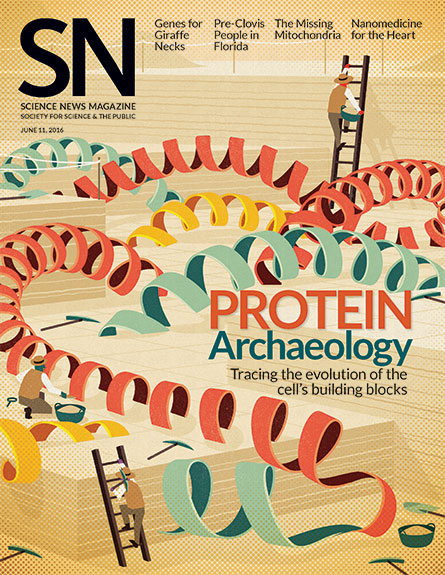Readers ponder animal flight
Reader feedback on the June 11, 2016, issue of Science News
 Flightless perks
Flightless perks
Galápagos cormorants are the only cormorant species with wings too small to fly, and broken cellular antennae that transmit garbled developmental messages are probably to blame, Tina Hesman Saey reportedin “How a Galápagos bird got tiny wings” (SN: 6/11/16, p. 11).
Online reader Mark S. wondered if the inability to fly conveyed any advantages to the cormorants.
It appears so, says evolutionary biologist Alejandro Burga of UCLA. The Galápagos cormorant may be flightless, but it’s a great diver. “Shorter wings can be advantageous for diving because they decrease bouyancy by decreasing the number of air bubbles trapped in feathers,” Burga wrote in an e-mail. Because the birds are flightless, they can allocate the energy they would use flying for other purposes. “In fact, the Galápagos cormorant is larger and heavier than its close relatives. This confers an advantage,” he wrote. With increased oxygen storage they can dive for longer.
Butterfly engineering
Scientists re-created a nanostructure found on green hairstreak butterfly wings, Emily Conover reported in “Sorting out a butterfly’s bright color, with a twist” (SN: 6/11/16, p. 32). The bioinspired structure can separate polarized light and may be useful for telecommunications.
“I’m curious to know what kind of aerodynamic effect those spiral structures have?” asked reader Daniel Williams.
The nanostructures themselves may be too small to have an impact on aerodynamics, says Amy Lang, an engineer at the University of Alabama in Tuscaloosa. Study coauthor Min Gu and colleagues are looking at potential microfluidic applications instead.
Nanostructures may not affect butterflies’ flight, but scales do. In a recent experiment, Lang and colleagues studied how monarch butterfly scales — just 100 micrometers thick — impact flight. Butterflies with their wing scales removed were less efficient fliers than monarchs with scales intact, she said.
Cold catchers
Children with a defective virus-sensing gene called IFIH1 may land in intensive care after a cold, Tina Hesman Saey reported in “Faulty gene can turn colds deadly for babies, toddlers” (SN: 6/11/16, p. 11).
Online reader John Turner suggested doctors could detect children who carry the gene through newborn screening tests, which are common in many U.S. hospitals. “The blood panel manufacturer could add an IFIH1 allele indicator to their test, and flag that one-in-a-thousand baby that will need special attention at flu season,” he wrote.
An indicator test for the defective gene is possible, but the research is still quite preliminary, Saey says. And tests must be carefully validated and undergo a rigorous review process before they can be added to newborn screenings, says computational biologist Samira Asgari of the Swiss Federal Institute of Technology in Lausanne. Although an IFIH1 indicator test “probably will be a good investment given the burden of pneumonia on health care systems,” she says, at this point it is unclear if or when such a test would be developed.
Clarification
In “Nano for the heart” (SN: 6/11/16, p. 22), freelance writer Sarah C.P. Williams describes efforts to develop nanoparticles with and without drugs attached to treat cardiovascular disease. A quote in the article mistakenly implied that Ira Tabas of Columbia University was referring to problems with statins. He was instead referring to problems with anti-inflammatories. He is not a critic of statins.
Tabas attaches nanoparticles developed by Omid Farokhzad of Harvard University to a small section of a protein called annexin A1. The protein is not a traditional anti-inflammatory agent, as was stated; it is, Tabas says, a pro-resolving molecule that dampens inflammation but also helps heal damage.








